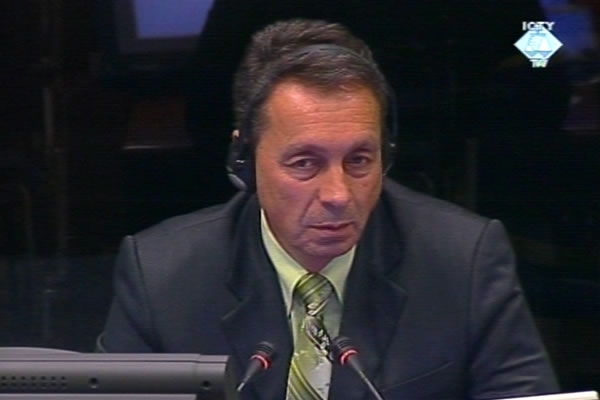Home
KARADZIC: STARI GRAD MUNICIPALITY WAS ‘TORTURE CHAMBER FOR SERBS’
In his cross-examination of Sarajevo policeman Nedzib Djozo, Radovan Karadzic tried to prove that his army did not kill civilians in Sedrenik and other parts of Sarajevo. In fact, as Karadzic contends, the Stari Grad municipality was ‘a torture chamber for Serbs’
 Nedzib Djozo, witness at the Radovan Karadzic trial
Nedzib Djozo, witness at the Radovan Karadzic trial At the Radovan Karadzic trial, Sarajevo policeman Nedzib Djozo said he was able to ascertain, as he investigated sniper and artillery incidents in Sedrenik, that civilians were targeted from the Serb positions on Spicasta Stijena, or Sharpstone. According to Djozo, about a hundred people were killed or wounded in Sedrenik during the war. The victims included Muslims, Serbs, Croats and others, regardless of their ethnicity.
In his cross-examination, Karadzic tried to impeach the witness, claiming that the Stari Grad municipality, where Djozo’s police station was located, was in fact ‘a torture chamber for Serbs’. After several attempts to prove that ‘Serbs were hunted down’ in that municipality ‘ceaselessly’, the judges stopped him and asked him to move on to other, relevant topics.
Bringing up an incident in December 1994, in which Dervisa Selimovic was wounded in Sedrenik (the incident is not listed in the indictment), Karadzic asked the witness to explain what methodology he used to determine that the fire had come from Sharpstone and demanded that the witness name all the victims from Sedrenik.
As the witness explained, ballistics experts were in charge of determining the direction from which artillery and sniper fire came. The location where Dervisa Semilovic was wounded was exposed to fire only from the direction of Sharpstone. The Serb troops opened fire from that position, targeting women and children, and this, as the witness said, ‘borders on abnormal behavior’.
‘Give me proof,’ Karadzic all but shouted, asking the witness to give him the names of all the victims from Sedrenik, claiming there were no more than ten casualties all told in Sedrenik in the 1,260 days of the siege of Sarajevo. He went on to say that ‘there were just two majorincidents in which a number of people were killed’, Markale 1 and 2, and even those were ‘staged anyway’. The witness rejected the claims, saying that the records on the number and names of the victims have been given to the prosecution in The Hague.
In her re-examination, prosecutor Carolyn Edgerton showed the witness the war diary kept by the Stari Grad public security station and asked the witness to read the names of Sedrenik residents who were injured or killed. As he went through the first few pages of the thick police diary, which covers only the first two years of the siege, the witness read out more than twenty names.
Karadzic then asked the witness to say whether the people whose names were in the war diary were civilians or soldiers. The witness was told by the judges to have another look at the first few pages of the diary and read out the name of Haris Mujhodzic, a 12-year-old boy. ‘If I were to continue browsing through the list, I’d find many more children’, the witness said, asking what kind of an army fired on 12-year-olds.
After Nedzib Djozo left the courtroom, the prosecution called Ismet Svraka, who was seriously wounded in the stomach and legs in the mortar shell explosion at Markale on 28 August 1995. His testimony will continue on Monday.
